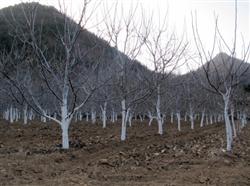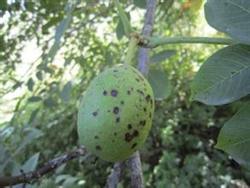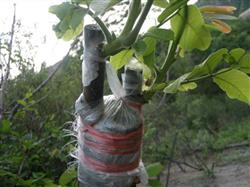Benefits of scattered planting of walnut trees

The scattered planting of walnut trees has the following advantages: tall walnut trees have a long life, and a hundred-year-old tree can still maintain a high yield. The tree is tall, with thick branches and luxuriant leaves. A large walnut tree has a crown diameter of more than 10 meters and covers an area of 100-200 square meters. Don't fight for farmland. Scattered planting of walnut trees can make full use of scattered open spaces such as field head, land edge, gully slope, gap land, village side and courtyard, without competing with farmland. At the same time, the environmental conditions of scattered planting are also conducive to the growth and development of walnut trees, so high yield can be obtained. Ventilated and transparent. Walnut is a light-loving tree species, which can bear a large amount of fruit and high yield in the sunny, well-ventilated, warm and cool climate. If the forest planting is adopted, the canopy is connected to each other, the light in the canopy is weak, the ventilation is poor, the leaves in the canopy are few, thin, small, easy to fall early, the inner chamber bears little or no fruit, and the fruit is only distributed on the branches outside the canopy. The yield per plant and the yield per unit area are 20% and 40% less than those of scattered planting. The yield per unit area is increased. The scattered planting walnut tree has high yield per plant, a wide range of suitable planting area and a large total planting area. When scattered planting, it can be planted on small plots of land that are not suitable for planting crops, such as field head, land edge, gully slope, gap land, open space next to the village, etc., and can be planted in all available spaces. The number and row spacing of planted plants are not limited, but the distance between two adjacent plants should not be less than 10 meters. Restrain diseases and insects. Scattered planting had a certain inhibitory effect on the occurrence and spread of walnut diseases and insect pests and promoted the high quality and high yield of walnut.
- Prev

Control of bacterial black spot of walnut
Walnut bacterial black spot mainly harms walnut fruit, the diseased fruit rate is 10% Mur40%, resulting in fruit blackening, decay, early fall, walnut kernel dryness. In addition, it also harms leaves, tender shoots, and the damage rate of some plots is up to 20%, 40%. Symptoms: the damaged young green fruit has brown oil-soaked spots on the peel at the initial stage.
- Next

Grafting and pruning of Walnut trees
Pruning method of trees in full fruit pruning of walnut trees refers to pruning in a broad sense, that is, both pruning and pruning. Trees of different ages have different pruning tasks. The pruning of young trees is to continue to cultivate and maintain the shape of high-yielding trees on the basis of shaping, while the pruning of primary fruit trees is to continue to cultivate backbone branches at all levels and make full use of auxiliary branches.
Related
- Moge, come on! The staff of the peasant association in the producing area of cantaloupe were frightened when the crowd gathered.
- Causes and Solutions of low Fruit setting rate of Apple
- Symptoms and control measures of passion fruit virus disease
- Fruit growing lesson: how do apple orchards keep high yields?
- Can you build orchards in the mountains? What are the pros and cons?
- How to manage the coloring period of Crisson grape?
- This paper introduces the processing technology of two kinds of fig products.
- How much is a month for retired teachers in rural areas by 2020?
- How can strawberry planting increase sugar content? We should pay attention to management in many aspects.
- What are the cultivation techniques on how to improve the yield of golden fruit?

